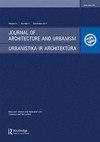DEVELOPING PARASITIC ARCHITECTURE AS A TOOL FOR PROPAGATION WITHIN CITIES
IF 0.8
0 ARCHITECTURE
引用次数: 1
Abstract
The term ‘parasitic architecture’ is an overused, and misunderstood buzzword within the architectural and urban planning community. By breaking down, through case study, how a space is developed and evolves, reclassification of architectural parasites is possible. Focusing on how parasitic architecture has produced urban growth and development of community within Tokyo as the primary case study, the reclassification is based in pre-existing architectural development and the nature of actual, living parasites. This reclassification of architectural parasite produces three separate types of parasite; the ‘structured,’ ‘symbiotic’ and the ‘hyper transient.’ Through the use of redefinition and reclassification, parasites in an architectural or urban planning context are then able to be manipulated as a tool for propagation within the existing built environment. Space within cities and megacities are becoming more of a commodity, so by utilising these new parasitic tools, it is possible to manipulate space to allow for an increase in urban growth, whilst still being flexible enough to fit into pre-existing planning legislation globally.发展寄生建筑作为城市内传播的工具
“寄生建筑”一词在建筑和城市规划界是一个被过度使用和误解的流行词。通过案例研究,分解空间是如何发展和演变的,重新分类建筑寄生虫是可能的。重点关注寄生建筑如何在东京产生城市增长和社区发展作为主要案例研究,重新分类是基于已有的建筑发展和实际的、活的寄生虫的性质。这种对建筑寄生虫的重新分类产生了三种不同类型的寄生虫;“结构化”、“共生”和“超瞬变”。“通过重新定义和分类,建筑或城市规划环境中的寄生虫可以作为一种工具在现有的建筑环境中传播。”城市和特大城市内的空间正变得越来越像一种商品,因此通过利用这些新的寄生工具,可以操纵空间,以允许城市增长的增加,同时仍然足够灵活,以适应全球已有的规划立法。
本文章由计算机程序翻译,如有差异,请以英文原文为准。
求助全文
约1分钟内获得全文
求助全文
来源期刊

Journal of Architecture and Urbanism
ARCHITECTURE-
CiteScore
1.30
自引率
14.30%
发文量
12
审稿时长
15 weeks
期刊介绍:
The Journal of Architecture and Urbanism publishes original research on all aspects of urban architecture.
 求助内容:
求助内容: 应助结果提醒方式:
应助结果提醒方式:


